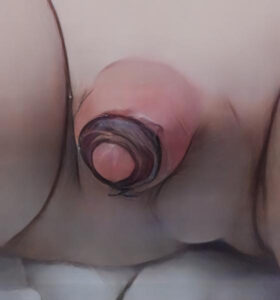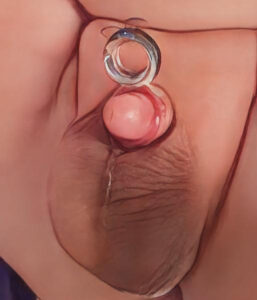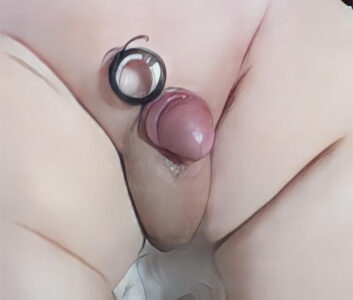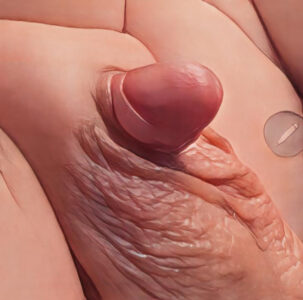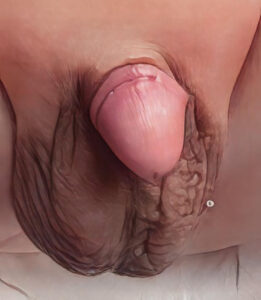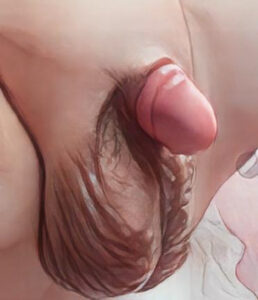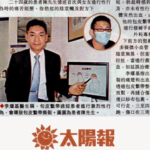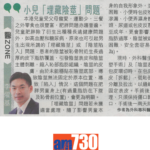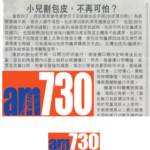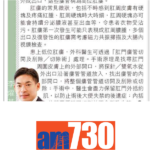
New generation laser circumcision for toddlers or young boys
New generation laser circumcision is a new way of circumcision surgery which has been used in thousands of patients. It is safe with good clinical outcomes.
New generation laser circumcision is performed with a carbon dioxide laser for cutting and cauterizing the foreskin. The cut wound is closed by surgical absorbable sutures. The wound is covered and strengthened with the new sterile medical super-glue.
After the laser cut and burn, the wound edge burnt tissue coagulates and forms a coagulum covering the free nerve endings of the wound edges. There will be less stimuli reaching the free nerve endings to sense and in turn less postoperative wound pain compared with traditional circumcision.
New Generation Medical Sterile Wound Super Glue is a new technology that uses medical sterile acrylic (cyanoacrylate) glue to adhere wounds. After suturing the stitches, applying a new generation of medical sterile wound super glue onto the wound will hold and strengthen the wound, improve postoperative wound protection, and enhance the wound's waterproof and antibacterial capabilities. When the penis is erect, the wound is relatively fixed, reducing the risk of wound dehiscence and bleeding. There is basically no need to clean the wound. Patients just keep the wound clean and dry. The use of a new generation of medical sterile wound super glue also protects the glans, which will reduce the hypersensitivity at the head of the penis upon touching. Medical sterile wound super glue will fall off along with the sloughing of epidermis 3 to 4 weeks after surgery.
The advantage of laser knifeless circumcision is that there is less bleeding during the operation, and the circumcision only takes about 15-30 minutes to complete. There is no need to wash the wound after every urination post-operatively. The postoperative pain is minimal to mild. The wound is circular and good looking. You can go to school immediately or 1 day after surgery. Patients can do mild exercise 2 to 3 weeks after surgery, and swim 3 to 4 weeks after surgery.
- Less bleeding during the operation
- Takes about 15-30 minutes to complete
- No need to wash the wound after every urination post-operatively
- Minimal to mild postoperative pain
- Circular and good looking wound
- Return to school immediately or 1 day after surgery
- Can do mild exercise 2 to 3 weeks after surgery
- Can swim 3 to 4 weeks after surgery


[plastibell of different size]
Plastibell circumcision under local anesthesia for neonate or infant
Initially, local anesthetic cream is applied onto the penis and prepuce of newborns or infants. After 15-30 minutes, the penile skin is numb and subsequent injection of long-acting local anesthesia becomes nearly painless. The plastibell is placed between the glans of the penis and the prepuce. A tight thread is tied tightly over the prepuce at the plastibell groove. This will cut off the blood supply and strangulate the distal prepuce beyond the thread. With ischemia, the distal prepuce gradually becomes black in color and falls off in 7 to 14 days. The narrow circumferential wound will then heal in a few days. The mechanism of plastibell circumcision is similar to the umbilical cord clamp stopping the blood supply of the distal umbilical cord, letting the distal umbilical cord blacken, detach spontaneously, and heal within a few days.
The plastibell circumcision is more suitable for newborns, infants, and young toddlers as it offers the advantage of very little post-operative pain compared with traditional circumcision. Postoperative wound care is simple:
- During diaper changing or after bathing, normal saline, distilled water, or antiseptic solution can be used for wound rinsing.
- Afterwards, dry the wound with gauze and a warm hair dryer.
In 2 to 3 weeks, the wound usually heals. The complication risk of this procedure is very low.
Post Operation

Traditional Circumcision
Traditional circumcision is a surgical procedure involving the cutting of the foreskin with a scalpel or scissors and closing the wound with ordinary surgical sutures. There is usually more bleeding during the surgery, and the post-operative pain is usually moderate to severe.
Normal saline, distilled water, or antiseptic solution is required for post-operative wound cleansing every time after urination.
Students are expected to be absent from school for about 1-2 weeks. Patients can usually perform moderate exercise four weeks post-operatively.
Traditional circumcision can be done under local anesthesia or under general anesthesia in the hospital. Due to the moderate to severe postoperative resting pain and severe wound cleansing pain after traditional circumcision, our surgical specialist seldom uses this method.
Summary of Newborn and Pediatric Circumcision
| Plastibell Circumcision | Laser Circumcision | Traditional Circumcision | |
| Indications | Phimosis / long prepuce / paraphimosis / recurrent balanitis / recurrent posthitis / foreskin diseases / religious reason / national tradition / family tradition / parental preference / Southern African | ||
| Location | Clinic / Hospital | ||
| Anaesthetic Method | (Clinic) local anaesthesia; (Hospital) local or general anaesthesia | ||
| Surgery Methods | Plastibell Circumcision | Laser Circumcision | Traditional Circumcision |
| Surgery Time | 5-10 minutes | 15-30 minutes | 30-60 minutes |
| Perioperative Bleeding | Little | Little | More |
| Return to School | 1 day after surgery | 1 day after surgery | 7-14 days after surgery |
| Position of Penis Postoperatively | For newborns, infants or toddlers, just put on regular diapers. | For little boys of age 2 years old or above, both upward penis fixation or letting penis pointing downwards inside paper cup can be used. | Upward penis fixation (the penis is prevented from hitting the surroundings and in turn resulting in minimal pain during walking / postural change). Letting penis pointing downward inside a paper cup (the penile wound hits the paper cup / pants and causes significant pain during walking / posture change). |
| Postoperative Wound Care | Wound rinsing during urination or change of diapers; use a piece of gauze to dry the tip of penis and blow it dry with fan or hair dryer. | No need for wound cleaning. Just keep wound dry. | Wound rinsing and cleaning after each urination. |
| Postoperative Pain | Minimal | Minimal | Moderate to severe |
| Postoperative Erection Management | No need | Use ice / numbing jelly | None |
| Return to Moderate Exercise | 2 - 3 weeks | 2 - 3 weeks | 4 - 6 weeks |
| Resume Swimming | 3-4 weeks | 3-4 weeks | 4 - 6 weeks |
| Postoperative Off Stitches | No need |
Sometimes
(water soluble sutures are used) |
Sometimes
(water soluble sutures are used) |
FAQs
A: Yes. Modern circumcision is very safe. The chance of complications is less than a few percent.


